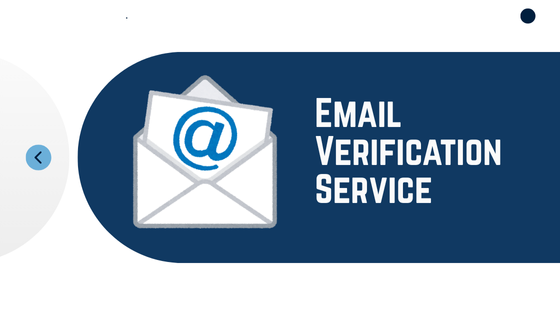Email marketing remains one of the most powerful tools for businesses to connect with their audience, but its effectiveness hinges on one critical factor: the quality of the email list. A list cluttered with invalid, outdated, or fake addresses doesn’t just reduce engagement—it actively harms deliverability. Internet service providers monitor bounce rates, spam complaints, and engagement signals. If too many of your emails bounce or go unopened, your sender reputation suffers, and even legitimate messages may land in the spam folder.
The hidden cost is not just wasted effort. Every email sent to a bad address consumes resources, skews analytics, and undermines trust in your campaign data. Imagine running a campaign where 30% of your list is invalid—your open rates plummet, your click-through rates look weaker than they are, and you’re left making decisions based on distorted numbers. That’s why email list verification is not a luxury, it’s a necessity.
What Email List Verification Actually Does
At its core, email list verification is the process of cleaning and validating email addresses to ensure they are accurate, active, and safe to send to. A verification service runs each address through a series of checks: syntax validation to catch typos, domain verification to confirm the domain is active, and mailbox verification to ensure the inbox actually exists. Some services also flag risky addresses, such as temporary emails, role-based accounts like “info@” or “support@,” and known spam traps.
The result is a refined list that gives your campaigns a fighting chance. Instead of wasting time and money on dead ends, you’re targeting real people who are more likely to engage with your message. This not only improves deliverability but also strengthens your sender reputation over time.
The Impact on Deliverability and ROI
Deliverability is the silent engine behind every successful email campaign. You can craft the most compelling subject line and the most persuasive copy, but if your emails never reach the inbox, none of it matters. Verified lists dramatically reduce bounce rates, which in turn signals to email providers that you are a trustworthy sender. That trust translates into higher inbox placement, which means more eyes on your content.
From a financial perspective, the return on investment is clear. Most email marketing platforms charge based on the number of subscribers or the volume of emails sent. By trimming invalid addresses, you’re not just improving performance—you’re cutting costs. A smaller, cleaner list often outperforms a bloated one because engagement rates rise, and every dollar spent is directed toward real prospects.
Protecting Your Brand Reputation
Beyond the technical benefits, email list verification plays a crucial role in protecting your brand’s reputation. Being flagged as a spammer can have long-term consequences, including blacklisting by major providers. Once your domain or IP is blacklisted, recovery is slow and painful, and in some cases, irreversible.
A verified list helps you avoid these pitfalls. It ensures that your brand is associated with professionalism and reliability rather than spammy practices. In industries where trust is everything—finance, healthcare, legal services—this layer of protection is invaluable.

Choosing the Right Verification Service
Not all verification services are created equal. Some focus on speed, others on accuracy, and the best ones strike a balance between the two. A reliable provider should offer real-time verification, detailed reporting, and compliance with data protection regulations. Verify550 email verification service has built a reputation for delivering accurate, scalable solutions that help businesses maintain clean lists without compromising security.
When evaluating providers, it’s worth considering integration options as well. The ability to connect directly with your CRM or email marketing platform can save hours of manual work. Automation ensures that new subscribers are verified before they ever enter your main list, keeping your database clean from the start.
Verification as an Ongoing Process
One of the biggest mistakes businesses make is treating verification as a one-time task. Email lists decay naturally over time—people change jobs, switch providers, or abandon old accounts. Studies suggest that email lists can degrade by as much as 20–30% per year. That means even a pristine list today will be riddled with invalid addresses a year from now if left unchecked.
The solution is to build verification into your workflow. Regularly scheduled cleanings, combined with real-time checks at the point of capture, ensure that your list remains healthy. This proactive approach prevents problems before they start and keeps your campaigns performing at their peak.
The Bigger Picture: Respecting Your Audience
At the heart of email list verification is respect for your audience. By ensuring that your messages reach real people who want to hear from you, you’re honoring the relationship between brand and subscriber. It’s not just about avoiding bounces or saving money—it’s about delivering value to the right people at the right time.
In an era where inboxes are crowded and attention spans are short, relevance is everything. A verified list allows you to focus on crafting messages that resonate, rather than worrying about whether they’ll even be delivered. That focus on quality over quantity is what separates successful campaigns from forgettable ones.
Conclusion
Email list verification is no longer optional—it’s a cornerstone of effective digital marketing. It safeguards deliverability, maximizes ROI, protects brand reputation, and ensures that your campaigns are built on a foundation of accuracy and trust. Whether you’re a small business owner or a large enterprise, investing in verification is investing in the long-term health of your marketing strategy.
The next time you prepare to hit “send,” ask yourself: is my list verified? If the answer is no, you’re not just risking bounces—you’re risking the success of your entire campaign. Clean data is powerful data, and in the world of email marketing, it’s the difference between being seen and being ignored.